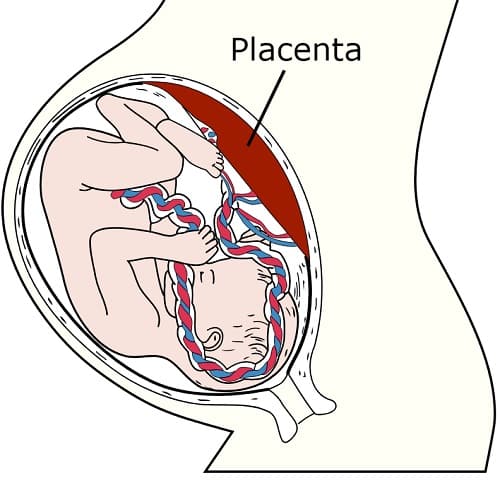I am 36 weeks pregnant, and I have heard that parents can keep the placenta after childbirth, perhaps to plant it with a sapling in honour of the birth of our son. Who should I send my request to? Thank you, Marie, for everything you do for parents! Andrée-Louise
Hello Andrée-Louise,
If you want to keep your placenta after giving birth, most health establishments in Quebec forbid it. This is because the placenta can contain toxins, and health professionals want to reduce the risk of contamination. You can always ask your doctor, and they will inform you if it is possible or not.
Some parents want the placenta to ingest the nutrients found in it, but this comes with risks. Placentophagy refers to eating placenta. And while infrequent today, it still occurs, especially in China, Germany and the United States.
This belief led to a process called “Placenta Encapsulation.” Capsules are manufactured using dehydrated placentas, and women can ingest them later to help with milk production and stabilization of postnatal mood. However, there are no laws or standards yet to govern this kind of practice. It is practiced on an unrecommended, unproven artisanal basis.
Placentas are sometimes used for research to better understand their components and role, and the vast majority are destroyed as biomedical waste directly in hospitals. It’s all about beliefs and rituals.
I thought I’d give you more examples of practices and rituals surrounding the placenta elsewhere in the world. As you’ll see, it is a rather ordinary organ for many peoples.
It is true that in many countries of the world, the placenta takes on a special meaning in motherhood. For example, in Mali, the midwife will wash and dry the placenta and place it in a basket with other ritual objects. The basket will be buried by the father to protect the baby.
In Cambodia, the placenta is seen as the baby’s twin. It will be placed next to the baby for 3 days to avoid early separation, wrapped in a banana leaf after being washed and sprinkled with salt.
In Madagascar, the midwife will bury the placenta and, not looking right or left when burying it. This is to prevent the baby from suffering from strabismus. And on Reunion Island, the placenta will be burned to avoid any risk of witchcraft manipulation that could harm the toddler.
This is how, in some cultures, placenta rituals are still practiced today.
Talk soon Andrée-Louise!
Marie
The Baby Expert
Photo wikipedia.org



